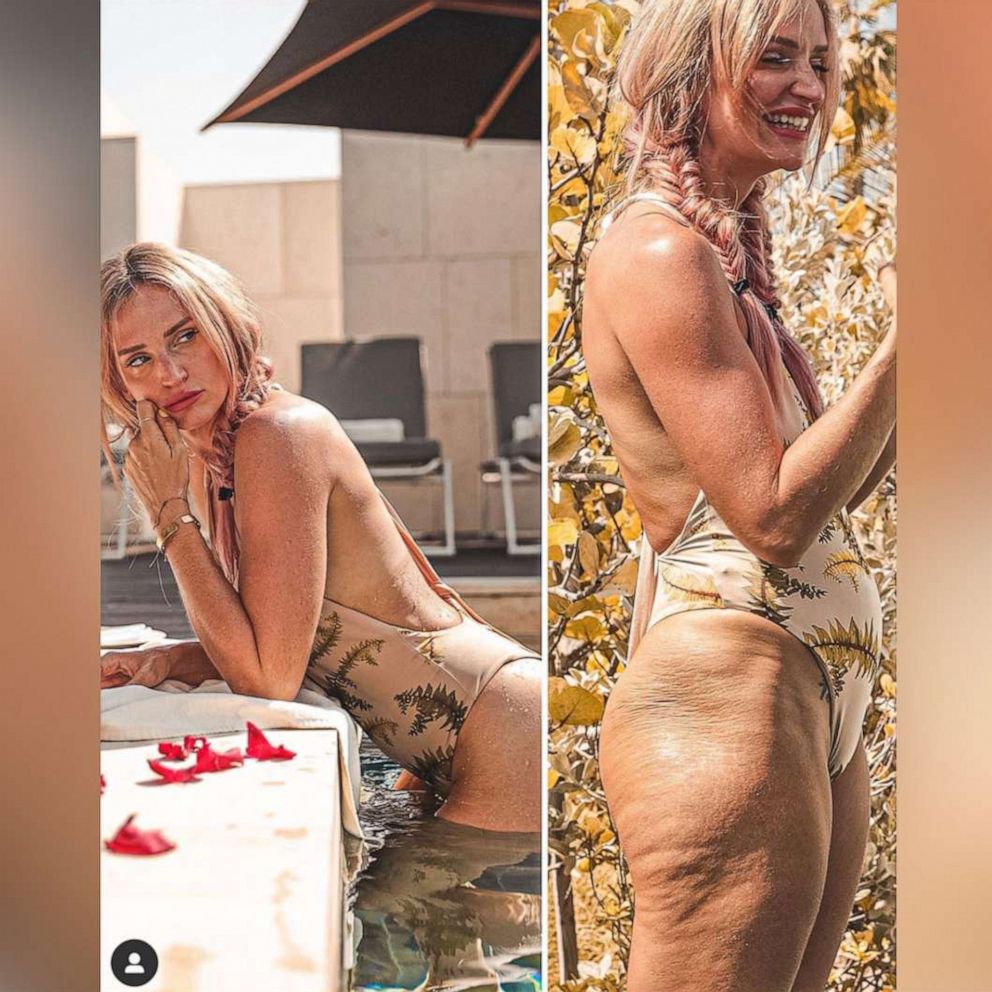Olympic athlete shares photo of her cellulite while competing: 'It is completely normal'
Olympic athlete Ilona Maher recently shared a photo of her own cellulite on social media in hopes of "normalizing" the skin condition.
Maher, a rugby player who competed on Team USA at the 2020 Olympics, took to TikTok to share the photo, which shows her competing in a past rugby tournament.
Maher cropped the photo to show her left leg, where cellulite is visible.
"I'm a literal Olympian," Maher said in the video, while pointing to her leg. "I'm a professional athlete. I run all day long. I lift weights all day long, constantly. And that is what my legs look like."
Maher noted that she has cellulite "everywhere," and said she is OK with it.
"It is completely normal, completely natural," she said. "It doesn't not take away from your athletic ability or how fast or how fit you are. It's just something that's part of your body. We all have it."
Maher said she made the video to respond to people who may be ashamed of having cellulite, or who may think it is "gross" or "unnatural."

Her video garnered thousands of comments, many from women who spoke out about their own experiences being shamed for having cellulite. Others thanked Maher for trying to normalize it.
"I wish I saw this when I was younger when a coach told me my thighs took away from my skills," wrote one commenter. "I was 15 [years old] with a six pack."
"You have no idea how much hearing this means," wrote another commenter. "It doesn't take away from how beautiful you are. And YOU are stunning."

Cellulite is the medical term for collections of fat that develop just beneath the skin, causing the skin to look "dimpled," according to the National Library of Medicine.
Cellulite is a skin condition that can affect people of all genders, body shapes and sizes, and skin colors.
"Everyone has layers of fat under the skin," the National Library of Medicine states on its website, adding that "collagen fibers that connect fat to the skin may stretch, break down, or pull tight. This allows fat cells to bulge out."
Some people may have more cellulite than others due to factors including genetics as well as hormonal changes, dehydration and the body's ability to burn energy, according to the National Library of Medicine.
The appearance and stigma of cellulite can cause some people to search for treatment options.
The American Academy of Dermatology Association says there are some research-proven ways to help reduce the appearance of cellulite, including laser treatments, acoustic wave therapy and subcision, a medical procedure that involves inserting a needle underneath the skin.
The AADA also says there are some caffeine-containing creams and lotions that can help reduce the appearance of cellulite by dehydrating cells.
Non-medical options for helping to reduce cellulite also include routine exercise, eating a nutritious diet, not smoking and avoiding rapid weight changes, according to the AADA and the National Library of Medicine.








